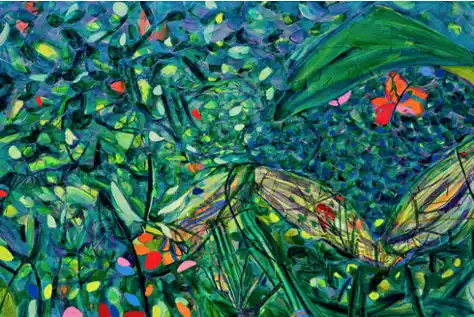FAB Market Insights
Stay informed with our art news and market insights.
Clients have been asking me recently about the state of the art market and specifically if this is a good time to buy, or alternatively a good time to sell. My short, honest answer has been that the market is less buoyant than last year and certainly less than 2022; gallery and auction sales are down in value and number; but overall the market is still solid and, one might say, surprisingly resilient; and there are opportunities for both buyers and sellers. Those opportunities must be well chosen though, with research and advice, as demand varies a lot in different sectors.
I’d like to discuss these points in more depth here and will summarize some of the standout trends of 2024 at the conclusion.
Firstly, I have no particular axe to grind - in my role as an advisor I am active in both bull and bear markets. Secondly, while the art market is now worth $65 billion annually with a growing global base, it is still small enough, in both perception and actual numbers, to be affected by one major sale, such as the Paul Allen collection in 2023 which made $1.6 billion, or even a few great or disappointing results. Art journalists are always looking for a storyline, and their version of events can create optimism or worry in collectors’ minds.
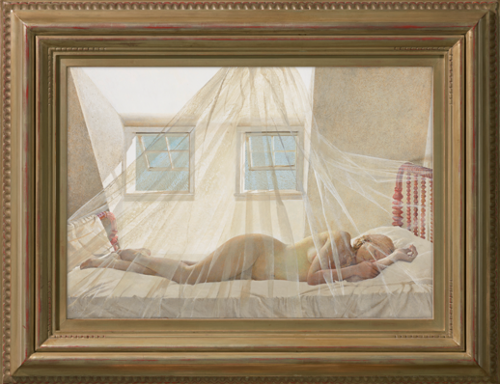
Andrew Wyeth ‘Daydream’, estimated at $2 - $3 million and sold for $23 million in the sale of Paul Allen’s collection, November 2022. Fine Art Brokers purchased a superb large Wyeth at auction in May 2024 for $3.5 million. There is a time to buy and a time to sell.
Art collecting for those of certain wealth is almost a required pursuit and is now recognized as an official asset class. But I advise clients only occasionally to buy with investment as the primary goal. For sure, huge profits can be made in art – and I have made some clients millions of dollars - but buy with your eye as well as your ear.
Between 2000 and 2007 the size of the entire art market grew nearly threefold. 2023 was the most active year in the history of the global art market in terms of auction transactions, with more than 760,000 successful bids. At Phillips for example, the world’s third largest auction house by art auction turnover, almost half of the 2023 clients were first-time buyers and a third of the buyers were from generations Y and Z. How different this is to when I began in the art world, when collecting was mainly for the elite or the studious. Back then there were no art fairs, galleries seemed intimidating to visitors other than for the cognoscenti, and auction catalogues didn’t have any illustrations or estimates. I guess that 90% of auction buyers then were ‘in the trade’. Now there is a major art fair or two every month, galleries target clients worldwide constantly with emails and offers, there are online platforms such as Artsy which have transformed buying opportunities worldwide, and auctions entice buyers with ritzy catalogues and sophisticated marketing.
Certainly, market results have recently contracted. This is partly due to world conflicts and interest rates, and partly because the market cannot keep charging along at a furious pace. There haven’t been as many record prices in 2024, the crazy rush to buy work by emerging artists at inflated prices has cooled, and there seems to be a bit of art fair fatigue. The global auction turnover from Fine Art auctions in the first quarter of 2024 was down 36% compared with Q1 2023.
But writing as someone who works in the industry with daily contact with clients, dealers and auction experts, this is in no way a crisis - it is a rationalization. I like the market now. Good art at the right price still sells well, but there are many options for buyers and so if a work has issues (condition or price especially) then it won’t sell. Sellers will listen to offers. The waiting lists for top contemporary artists are shorter or have disappeared, and there are some bargains at auction.
In terms of changes in market spread by region, the UBS Art Market Report 2024 recorded that the US accounts for 42%, but China has ousted the UK as the second largest market with 19% of sales. Art fairs in the East such as Art Basel Hong Kong and Frieze Seoul, together with many important western galleries opening in Shanghai, Hong and Seoul, have increased art collecting vastly in the region.
Generally speaking the market in London is decreasing in value. I put this down mainly to Brexit and the appalling red-tape and cost needed to transact in London. Auctions in Paris and Hong Kong will benefit. Having said that, the 10 best auction results of the first quarter of 2024 were all achieved in London in March, six at Christie’s and four at Sotheby’s, and all works by Modern, Post-War and Contemporary artists. Christie’s got $43 million for René Magritte’s ‘L’Ami Intime’, $25.1 million for Francis Bacon’s ‘Landscape near Malabata, Tangier’ and nearly $24 million for ‘California’, one of David Hockney’s great early paintings.

My good friend and fellow dealer Hollis Taggart has commented: “We are finding that the froth that characterized the art market in recent years, especially for speculative emerging contemporary artist, is undergoing a leveling off. The secondary market as well is more cautious and selective than in the past couple of years. The art market is adjusting to world events and global uncertainties; quality works are selling but at more rational price levels at the moment”.
The massive escalation in Contemporary prices has slowed. Speculators have generally failed in 2024 to achieve large gains when placing works by hot young artists at auction that they’ve recently purchased on the primary market. But, as with all statistics, especially in the art world, there are exceptions: in March Christie’s London set a new auction record for Jadé Fadojutimi, aged 31, for ‘The Woven Warped Garden of Ponder’ (2021), for $1.9m, more than three times its estimate. Another exception has been Lucy Bull, whose 2020 painting ’16.10’ made $1.8m from a $500,000 - $700,000 estimate at Sotheby’s New York in May.
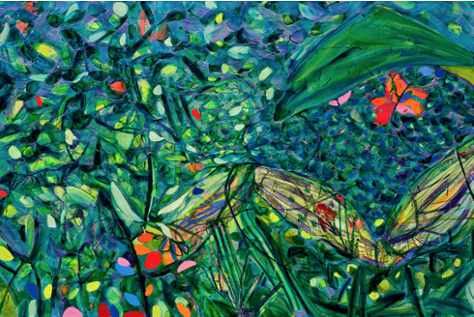
Jadé Fadojutimi, born 1993, ‘The Woven Warped Garden of Ponder’ (2021), sold for $1.9m, against an estimate of $500,000 – 750,000, going against the current trend for contemporary art at auction.
So, the standout trends of 2023 – scarcity of masterpieces, high volume of transactions and intense interest in female artists – have all been confirmed in the first half of this year. For the market to improve, we need some exceptional collections to come to sale, like those of Paul Allen and Thomas and Doris Ammann, which alone generated $2 billion dollars in 2022, and Emily Fischer Landau to a lesser extent in 2023.
A proactive acquisition policy by Western museums, coupled with growing demand from private collectors, has made the market for works by women artists particularly dynamic. The number of transactions involving works by women artists has doubled in five years and tripled in ten years. Regardless of the style or period in question, prices for works by famous female artists are increasing, driven by higher competition.
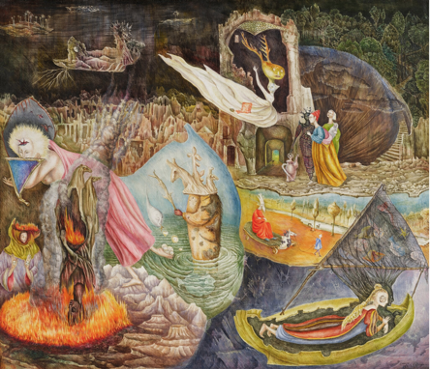
Leonora Carrington Les Distractions de Dagobert, 1945, sold for $28.5 million in May 2024, when the previous record was $3.25m. Carrington has only fairly recently been acknowledged as a significant Surrealist. This result is an example of a true masterpiece defying market expectations, and choosing the right moment to sell by the master collector Ron Cordover and the astute promotion of Julian Dawes at Sotheby’s.
I mentioned earlier that there is some art fair fatigue. No longer do the major collectors visit all the main fairs – although their advisors might – and those galleries which take part in all the important fairs inevitably show some of the same works; not a criticism, just a necessity. But I visited Art Basel in June, admittedly for just the first VIP day, and the mood was upbeat and there were multiple seven figure sales, and a torrent of sales at lower prices. You wouldn’t have thought that there were any wobbles in the market. But Basel – the Swiss fair, not the American version each December – is a unique occasion where the great and good in general put market inconsistencies to one side. Iwan Wirth of Hauser & Wirth declared “The advantage of the market returning to a more humane pace is that the most discerning international collectors are committing here and now to the very best of the best.”
And I agree with Noah Horowitz, the chief executive of Art Basel, who told The Art Newspaper “There’s a desire to overanalyze market prognostics like interest rates and geopolitical events, but it’s not a perfect science. The market is human-to-human movements, and it’s also about unique objects.
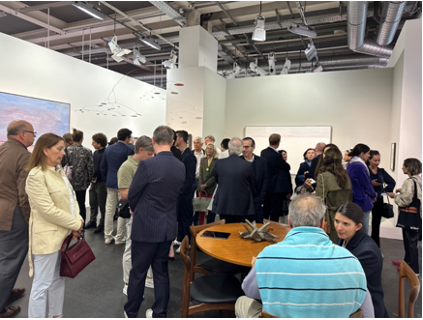
A photo I took on the opening day at Art Basel, June 2024. Hauser & Wirth’s booth. The gallery reportedly sold more than $40m by the end of the first day.
Fine Art Brokers opinion on the basic trends of 2024:
-
The art market is resilient overall but careful choice in acquisition and sale is more important now than 2014-2022.
-
19th century painting (excluding Impressionism and Post-Impressionism) is totally out of fashion. A Hudson River painting or a Victorian figure study that was worth $200,000 in 1995 is now worth $50,000.
-
Demand for excellent works by Post-War female artists exceeds supply to the power of ten.
-
A* works by top ranked Impressionists and Post-Impressionists are still selling well but to diminishing number of collectors.
-
B works by second tier Impressionists and Post-Impressionists are very hard to sell even at reduced prices.
-
Despite market woes, there are always niche markets, particular artists, and masterpieces that defy the trends.
-
The tendency of ‘art investors’ to follow auction results of young artists and then buy the artist on the primary market is reducing as they realize some auctions can be manipulated by interested parties.
-
Collectors, more than ever, are drawn to brand names and recent trends than buying art they like for what it is.
-
The market has realized that prices for young emerging artists had got out of hand.
-
More than ever, it is hard for small galleries to keep successful artists when the mega galleries come calling. Collectors increasingly need the reassurance of buying from one of the top galleries.
-
The top few galleries and the main auction houses are tightening their grip on the market to the detriment of collectors’ interests and of course small and medium galleries.
-
Major auctions are now dominated by third-party guarantees and most collectors are unaware of the consequences.
I asked experts I know at the two leading auction houses for their take on the current market and received these responses. They are a both a bit like a press release, but I don’t disagree:
Conor Jordon, Deputy Chairman of Christie’s, says “The auction market is in a very rational frame-of-mind. Across nearly all sales we are seeing healthy sell-through rates, indicating an engaged and active buying audience. In addition, what is of good quality and appropriately priced will garner competition, while exceptional objects continue to excite collectors and can really run.”
And Julian Dawes, Head of Impressionist and Modern Art at Sotheby’s commented “The current art market has demonstrated resilience and significant value over the first half of the year, attracting a growing number of global bidders. Auctions have seen strong prices so far, including increased prominence of women artists at the very high end, underscored by the recent record-breaking results for Leonora Carrington's Les Distractions de Dagobert in New York. Works by stalwart Evening Sale artists such as Pablo Picasso, Claude Monet, and Pierre-Auguste Renoir continue to engage bidders, proving that top quality is always in demand.”
by Ray Waterhouse
Chairman, Fine Art Brokers


